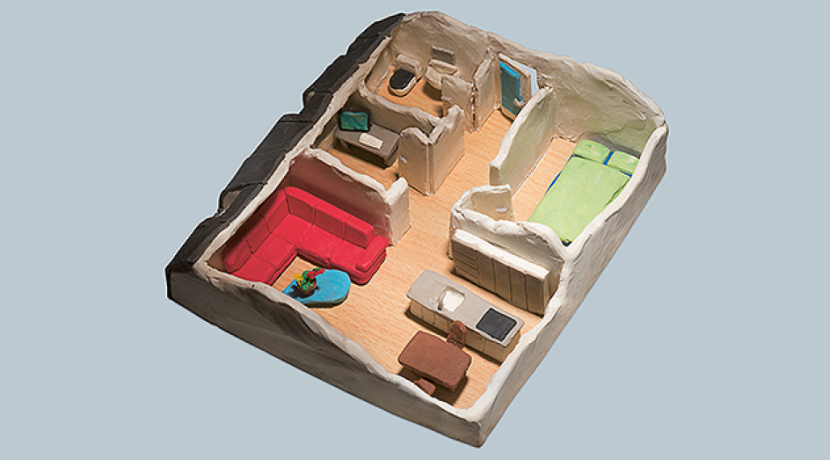Rules for mortgages are tightening – the essentials in brief.
Why have the regulations on home financing been tightened?
Anyone applying for a mortgage loan must be able to finance the interest and amortization payments not only now, but also into the future. “Low interest rates give the impression that real estate is an inexpensive investment,” says Maciej Skoczek, a real estate analyst at UBS. But sooner or later households will likely be confronted with higher interest rates or a drop in real estate prices – or both at the same time. That’s why it makes sense to calculate with a safety cushion.
What income do I need for a mortgage?
The financial affordability of your own home is present when your regular interest payments, amortization costs and home expenses do not exceed a third of your gross income. When calculating affordability, the interest rate is crucial. As a rule, the bank does not use the current low interest rate, but an imputed rate of about five percent. They assume one percent of the real estate value for ancillary costs, such as repairs, taxes and utilities. So if you want to buy a property for 800,000 francs, that means you will need an income of 141,500 francs with a loan-to-value ratio of 80 percent. This is the result when you add in the interest (32,000 francs), the amortization (7,111 francs) and the ancillary costs (8,000 francs), and multiply the total by a factor of three.
How much equity does the bank need from me?
The equity needed for buying your own home is set at 20 percent of the purchase price. At least 10 percent must be “genuine” equity capital. This can be your own savings, securities, pillar 3a assets, or the surrender value of insurance policies. The remaining 10 percent may come from the withdrawal or pledging of pillar 2 assets. The more equity you contribute, the better the affordability assessment, and the lower the risk that your loan application will be refused.
Are secondary and additional incomes taken into account?
A couple’s second income can be considered, but only if they hold joint liability. This means that each of them is liable for the entire loan. Other additional income can also be taken into account, but only if it has a sustainable character.
What loans from third parties can be considered as equity?
The origin of the loan is irrelevant. What matters and counts are the interest rate structure and repayment obligations. Nonrepayable as well as interest-free loans from the private sphere can be considered as equity – the same applies to pre-inheritance sums.
What do I need to think about regarding mortgage amortization?
Stricter minimum standards set by the Swiss Bankers Association have applied since September 1, 2014. Mortgages must now be reduced to two-thirds of the property’s value within 15 years, instead of the previously required 20 years. If the value of the property is one million francs, for instance, this will lead – with an 80-percent loan-to-value ratio – to an annual amortization that is around 2,000 francs higher.
Whom do these minimum amortization standards apply to?
They apply to all new mortgages for residential properties as well as to those desiring to be increased – regardless whether for owner-occupied property, investment properties, or multi-family homes.
Given current interest rates, is now a good time to buy property?
Record low interest rates make financing a home today less expensive than ever before. At the same time, housing prices seem to have peaked. When deciding on the best time to buy, there are subjective factors to think about on the one hand, and market conditions and future expectations on the other. Here’s a simple scenario: if property prices fall by 10 percent in the next three years, you’d be better off waiting to buy – as long as long-term interest rates don’t exceed 2.2 percent by then.
“If prices drop even further, for example by 20 percent, waiting will save you even more money, as long as the interest rate stays under 5 percent,” predicts UBS real estate analyst Maciej Skoczek. Whether home prices will remain high in the long term depends on the economy and interest rates. Maciej Skoczek emphasizes: “In the event of a strong recession, we expect prices to fall by up to 15 percent throughout Switzerland over the next three years.”
Are there ways to secure the long-term affordability of your own home?
First, you should take advantage of the current low interest rates to put aside money for unexpected payments. Second, it makes sense to have a balanced mix of short- and long-term mortgages – to be prepared for the risk of rising interest rates. It’s worth exploring your options with one of our client advisors.
How much should I budget for contingencies?
The longer-term costs of real estate are often underestimated. When you move into a newly constructed building, utilities and maintenance costs are generally lower. However, every part of a building will age, and should be amortized to zero within 40 to 50 years. According to recent figures, long-term costs for maintenance, repair and renovation eat up about 2 to 2.5 percent of a building’s value each year. That’s why it’s important to build up reserves for an unexpected rise in interest rates, or unplanned repairs and maintenance.
The market: will apartment prices sink soon?
In 2014, asking prices for owner-occupied apartments rose 2.3 percent on the previous year. However, the momentum of price rises slowed. We believe this was due to stricter mortgage regulations and increased difficulties in meeting affordability standards. Prices increased the most in Northwestern Switzerland (4.7 percent). Positive growth of 2.5 to 4 percent was seen in Southern, Central and Eastern Switzerland, while prices for owner-occupied apartments on Lake Geneva and in Bern dropped by about 1.5 percent. Prices were relatively unchanged in the Zurich area and in Western Switzerland in 2014. For 2015, we expect the price of owner-occupied apartments throughout Switzerland to fall by 0.5 percent.
https://www.ubs.com/magazines/insights/en/ownership/2015/which-house-is-in-my-budget.html



